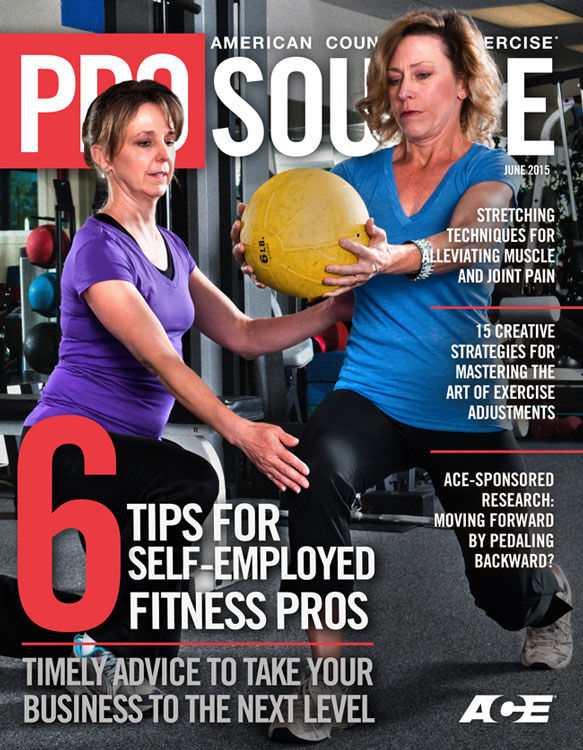
If you’re like me, you’ve gone long periods of time without liability insurance. My reasoning: “If I get sued, I have nothing they can take other than my car, which they can have—along with the payments!”
“This is a great example of what I consider a ‘common misconception objection,’” says Ted Devine, CEO of insureon.
Devine uses the example of a yoga instructor who has a student who claims he was injured during class. “The instructor is always careful to offer modified poses and check students’ form and nothing seemed amiss during class. But two weeks later, the student says he has serious neck pain and the instructor gets a notice that she’s being sued for the cost of medical bills plus pain and suffering—about $500,000 in all.”

At this point, the instructor has two options: face the accusations head-on in court or ignore them. “If the yoga instructor does nothing, the court will likely enter what’s called a ‘default judgment’ against her, meaning that it will automatically rule in favor of the plaintiff for exactly what he asked for.”
You may be thinking, well that’s no problem. I can hardly pay my bills as it is so there’s no way they’ll get any money out of me. This doesn’t matter to the court, says Devine.
“If the plaintiff can’t collect his money immediately, because the instructor has no assets, the court may order a ‘till tap,’ which is like wage garnishment for those who own businesses. Essentially, what would happen is that she’d have to pay the plaintiff a little money every month from her business proceeds until the judgment was paid off. If she shuts down the business and gets a job, the court could garnish her wages until the judgment was paid.”
One way out of this problem is that the instructor could file Chapter 7 Bankruptcy and wipe out all the debt with it—but this comes with its own set of issues, says Devine, “one of them being that her credit will be seriously hurt for seven to 10 years, making it difficult to get a credit card, get loans, buy big-ticket items and even rent property.”
How Can They Really Prove Fault?
But isn’t negligence difficult to prove? How can a lawyer verify that this student really injured his neck in this instructor’s class? “This is the exact reason to carry liability insurance,” says James Decker, vice president of Philadelphia Insurance Companies, “because negligence can be hard to prove or disprove and legal costs may mount. Insurance will cover these defense costs.”
“It can be difficult to prove negligence,” agrees Devine, “but the real cost of being sued is not in being found liable. It’s in defending yourself against the claims. The U.S. Chamber Institute for Legal Reform estimates that defending yourself against a frivolous lawsuit that the court tosses out costs $2,000 to $5,000 in legal fees. Even if you attempt a do-it-yourself defense, which is risky at best, you’ll have to invest lots of time in prepping and presenting the defense, which cuts into your ability to earn revenue.”
Common Insurance Definitions
Aggregate Limit: Usually refers to liability insurance and indicates the amount of coverage that the insured has under the contract for a specific period of time, usually the contract period, no matter how many separate accidents might occur.
Indemnity: Restoration to the victim of a loss by payment, repair or replacement.
Liability Insurance: Insurance that pays and renders service on behalf of an insured for loss arising out of his responsibility, due to negligence, to others imposed by law or assumed by contract.
Underwriter: The individual trained in evaluating risks and determining rates and coverages for them. Also known as an insurer.
Source: www.ambest.com/resource/glossary.html
This cost increases considerably if your lawyer has to put together a defense or negotiate a settlement, continues Devine. “It’s not unusual to rack up a few thousand in legal bills before even getting to the settlement or judgment amount. The beautiful thing about liability insurance is that it can pay both the legal fees and the costs of any judgments or settlements you’re found responsible for.”
“The cost of insuring starts at under $200 per year. Having a civil action pursued against an individual will carry with them for life,” adds Decker. “Not carrying liability insurance speaks to a lack of professionalism. Liability insurance also affords an individual the ability to work for and with other entities, like gyms and municipalities where they may look to operate or train. Most, if not all businesses will not work with an individual who fails to carry their own liability insurance.”
The Right Policy for You
When you apply for liability insurance, you’ll be asked a few basic questions, such as what primary service you offer, for instance, personal training, group fitness or yoga; who you’re certified through (or if you have a bachelor’s or master’s degree); and whether or not you’re a member of a sponsoring organization, such as ACE or IDEA. The greater your qualifications are, the greater your likelihood of a better premium.
“The policies and coverages for fitness professionals do not vary greatly so choosing the right policy is a not a [large] concern,” says Decker. “The difference comes on the carrier’s side, as they will charge differently based on the [risk] exposures presented.”
Whether or not you’ve been sued in the past may or may not come into play when figuring the cost of your liability insurance. “Having a suit filed against you will not automatically make it more difficult for you to purchase your policy,” explains Hunter Hoffmann, head of U.S. communications for Hiscox Insurance.
Nor will it necessarily increase the cost of your premium. “Insurance companies will factor in whether you were at fault, if preventative measures have been taken and the probability of a similar suit being filed in the future,” adds Hoffmann.

Insurance for Health and Fitness Professionals
ACE Professionals have access to discounted liability insurance through either FitnessPak (developed by Interwest Insurance Services Inc.) or InsurePersonalTrainers.com (by Hoffman Insurance), depending on your region.
FITNESSPAK
When it comes to liability insurance, FitnessPak offers some of the broadest coverage available at the lowest possible rates. Policies are available only to those residing and practicing in the United States. ACE Certified Professionals have access to special rates.
INSUREPERSONALTRAINERS.COM
A coverage program by Hoffman Insurance, InsurePersonalTrainers.com provides comprehensive insurance for health clubs of all types located in the United States. ACE Certified Professionals who own their own studios can take advantage of an exclusive discount of 40% off.
Click here for more information on how you can protect yourself with quality insurance.
Part of choosing the best policy for you will depend upon the capacity in which you operate. Are you fully self-employed as an independent contractor? Or are you an employee of a gym or studio? Do you own or rent studio space? Do you train in clients’ homes?
“Often, full-time employees are covered by the gym’s insurance, while self-employed professionals are required to carry their own coverage independently,” explains Devine. “In some cases, though, it makes sense to carry an individual policy, even as an employee. This is because, in the event of a lawsuit, one common legal strategy is to ‘sue everyone in the room’—the gym where the injury took place, the trainer or instructor who was working with the injured person, the equipment manufacturer, etc. In that case, the gym’s insurance would likely not cover the employee who is being sued as an individual.”
If you travel to people’s homes or other out-of-gym locations to teach or train, make sure your personal auto insurance policy covers business-related driving. “And if you travel with equipment,” adds Devine, “you may have to add a special rider to cover your equipment away from the primary business location.”
Do you host fitness or wellness retreats or camps? Depending on the location, you may be required to carry additional coverage. If you’re holding a retreat in someone’s home, his or her homeowner’s policy may cover it. If you’re holding it on a beach and are including water activities, you will probably need more coverage. It’s important to talk to an underwriter with your liability insurance company and ask if they cover these additional activities. If they don’t, you can ask them to add a rider to your policy or check out a company that specializes in events, such as The Event Helper.
As a side note, liability insurance does not include disability and life insurance. These are additional policies to consider.
As far as how much coverage to carry, Decker says the standard industry limit is $1 million per occurrence with a $3 million policy period aggregate. This means that the insurance company would pay up to $1 million for any one incident and up to $3 million for all claims during the life of the policy, which is typically one year. When you renew your policy, the limits reset and start over again.
“Insurance provides the security that fitness professionals need to focus on their clients and growing their business,” concludes Hoffmann. “Even if they do everything correctly in their jobs, they are still vulnerable to legal actions from injured or dissatisfied clients. Lawyers cost money and defending yourself takes time, distracting you from your business. Insurance takes care of your legal defense costs and potential judgments and lets fitness professionals focus on their business.”





 by
by 




